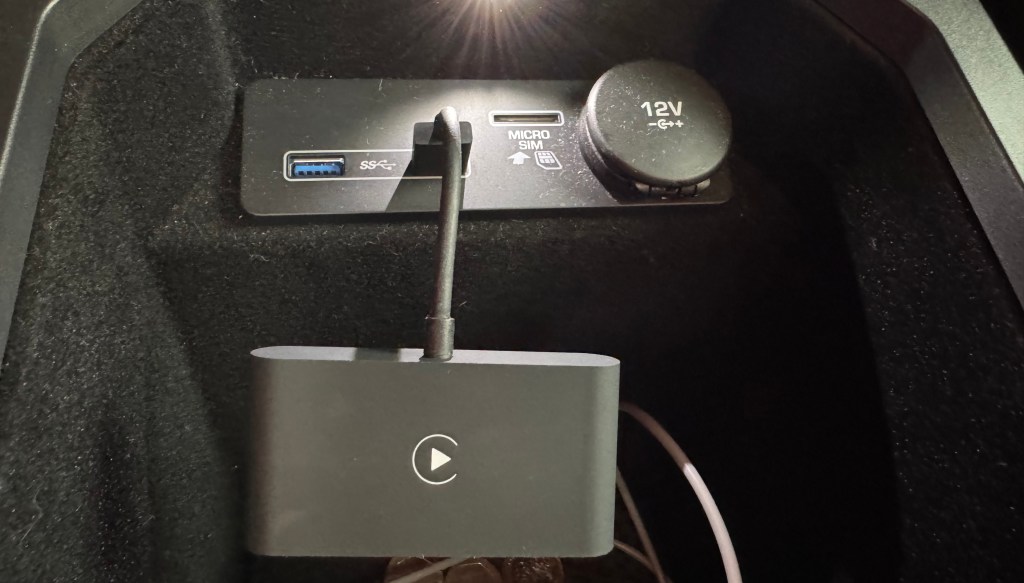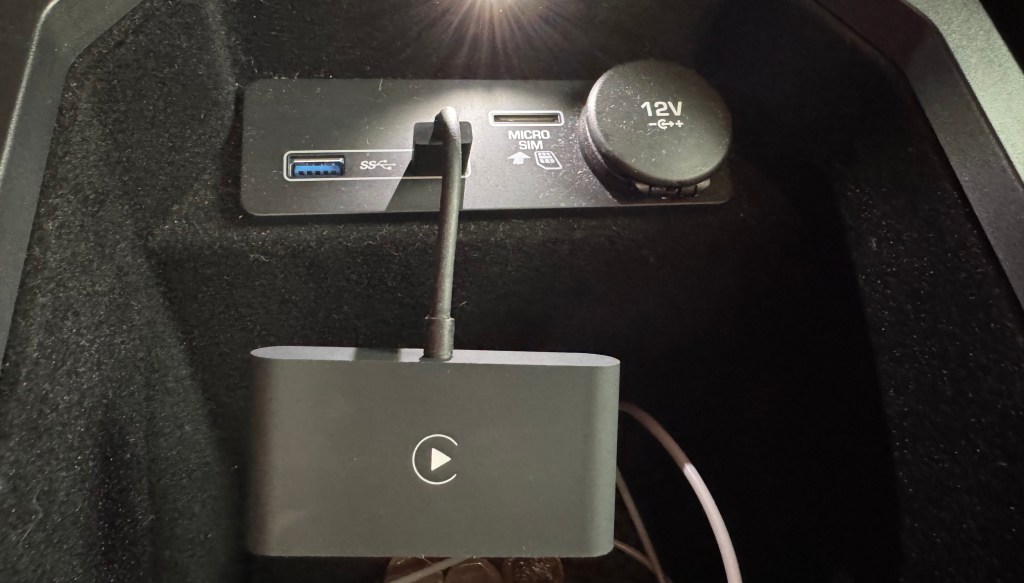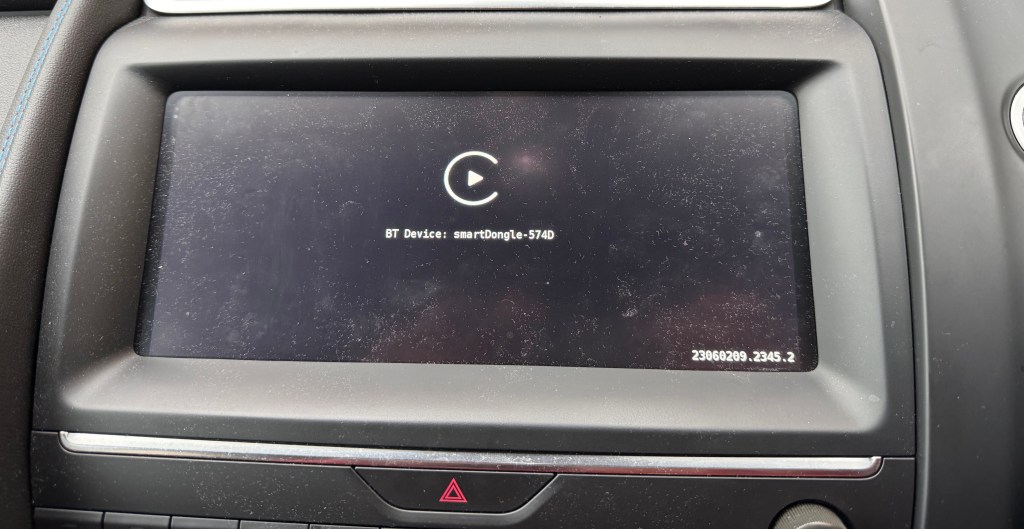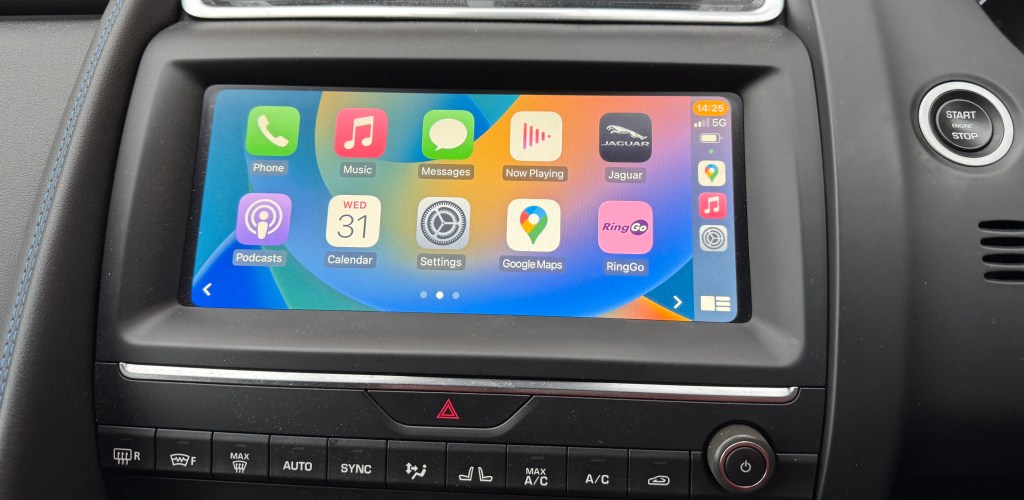
If, like me, you’re rocking an iPhone in your pocket and you drive, you’re probably quite keen to use CarPlay in your motor. It was a must-have for me when picking out my most recent car a while back. But there’s only one problem – I’m constrained to the wire. And as a 21st century tech enthusiast, that just won’t do. I want to leave my phone in my pocket. It’s lazy, but I don’t care. Having to plug my phone in every time I get in is just more inconvenient than I’d like. So I’m retrofitting wireless CarPlay.
Don’t get me wrong, this isn’t some complicated retrofit with wires and screwdrivers – it’s a £40 dongle from Amazon. My car isn’t particularly old – it comes with wired CarPlay as standard. So this accessory gives it the technological upgrade I was after. And it worked surprisingly well.
It’s as easy as plugging it in
Unlike other CarPlay retrofits, this doesn’t require giving your front panel any facelifts with a new display. That’s because my car already has CarPlay built-in – you’ll need that too if you want to do the same thing. The difference is that we’re making our wired CarPlay wireless, rather than adding it to the vehicle. For reference, the car I’m doing this to is a 2018 Jaguar E-Pace, with this AirLinnnk dongle from Amazon.


Once you’ve got your dongle, you plug it in to the USB port in your car. Use the same one you’ve been using for wired CarPlay this whole time. On some cars, you’ll need to use a specific hole. Once it’s plugged in, your car’s display will ask you if you want to open the device with CarPlay. Hit Yes and any “Remember for next time” options that may present themselves. What will open up is a black display with the name of the dongle written on.


Now, you’ll want to whip out your iPhone. Make sure Wi-Fi and Bluetooth are both switched on. Connect to the dongle via Bluetooth. Your handset will ask you to allow your contacts to sync, it’s essential you allow this for CarPlay to work properly. It’ll then ask you if you want to use the accessory for CarPlay. Unsurprisingly, you’ll want to allow that as well.


Once you’ve done that, you should see CarPlay spring to life on your central display. And hey presto, you can go about using the in-car software as you usually would. But how does it fare?
How does it fare?
With the CarPlay dongle all set up, it’s high time that we see how it performs. When you get back in your car, your phone will connect to the dongle and CarPlay will boot up automatically. It’ll do this in around 10 seconds or so, which is fairly typical of wireless CarPlay that comes baked in to other cars.
Latency is a little slower than the wired connection you’re used to, or when wireless CarPlay is built-in. That’s because any buttons you press have to go through the dongle before getting to your phone, rather than jumping straight to your phone. For example, if you’re skipping a track, it might take two words of the song before it actually skips. It’s negligible really, but worth bearing in mind before you jump in.


Otherwise, all systems are a go. The dongle works really rather well, and you’d forget that you’re using a retrofit rather that software that’s been there the whole time. Your only tell-tale sign is that your car’s settings might show the dongle’s name connected rather than your phone. But using CarPlay? The experience is smooth, seamless, and reliable.
A wireless CarPlay is a happy CarPlay
Going through this process has taught me that a wireless CarPlay is a happy CarPlay. Being able to leave your phone in your pocket and pick up CarPlay where you left off (and your music) feels as exciting as when Bluetooth first arrived inside cars. It’s how CarPlay was meant to be experience, and now you’re not being throttled by a cable.






